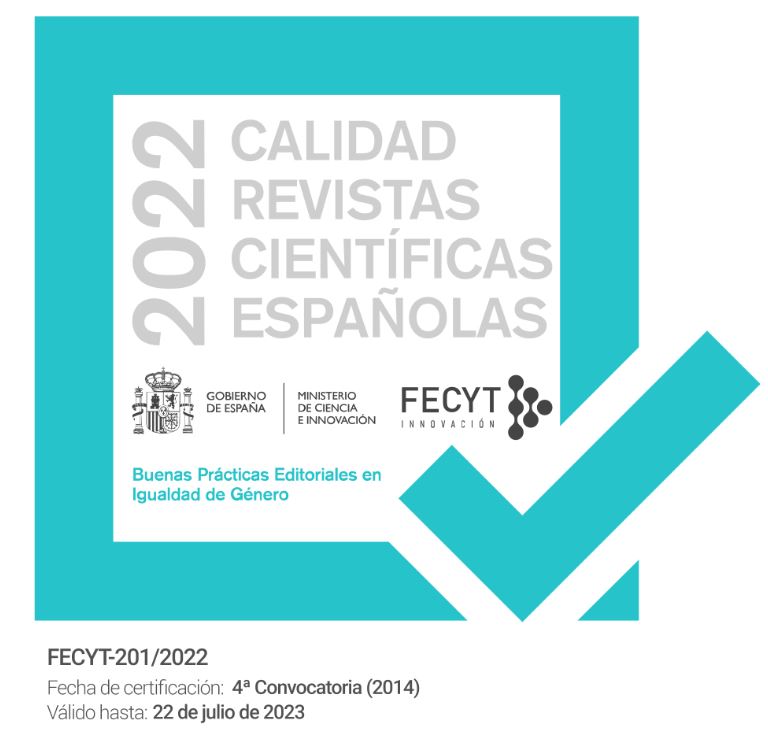Educación virtual afectiva en la formación de investigadores
DOI:
https://doi.org/10.30827/eticanet.v13i2.12000Abstract
El artículo expone los resultados de la evaluación de una experiencia de formación virtual de profesores para la investigación educativa. Se adopta el marco teórico de Garrison, Anderson y Archer (2000), con referencia a las presencias social, cognitiva y de enseñanza, a los fines de observar las interacciones en foros de la asignatura "Taller de Tesis", desarrollada en Moodle. El estudio busca aportar conocimiento con base empírica para la planificación didáctica de las estrategias que habiliten la emergencia de nuevos modos de aprendizaje en red en el campo de la formación en investigación de profesores, en contextos de educación formal.Downloads
References
Akyol, Z., Garrison, R. y Ozden, Y. (2009) Online and Blended Communities of Inquiry: Exploring the Developmental and Perceptional Differences. The International Review of Research in Open and Distance Learning, Vol 10, No 6 En: http://www.irrodl.org/index.php/irrodl/article/view/765/1436 [Consultado: 8 marzo 2012]
Anderson, Terry, Rourke, Liam, Garrison, Rando, y Walter Archer (2001) “Assesing Teaching presence in a computer conferecing context”, Journal of Asynchronous Learning Netwworks. Sloan Consortium, vol. 4, núm. 2: http://www.sloan-c.org/publications/JALN/v5n2/v5n2_anderson.asp. [Consultado: 10 de agosto de 2009].
Barab, S., A., & Plucker, J. A. (2002). Smart people or smart contexts? Cognition, ability, and talent development in an age of situated approaches to knowing and learning. Educational Psychologist, 37(3), 165-182. [Consultado el 10 de mayo de 2013]
Barberà E., Badia, A., Colomina, R., Coll, C., Espasa, A., Gispert, I., Lafuente, M., Mayordomo, R., Mauri, M., Naranjo, M., Onrubia, J., Remesal, A., Rochera, Mª J., Segués, T., Sigalés, C. (2002) Pautas para el análisis de la intervención en entornos de aprendizaje virtual: dimensiones relevantes e instrumentos de evaluación. EDUS/UOC & GRINTIE/UB. Informe de progreso. Diciembre de 2002
Brown, J., Collins, A. y Duguid, P. (1989). Situated cognition and the culture of learning. Educational Researcher, 18 (1), 32-42. citado en Díaz Barriga, F, 2003.
Carlino, P. La experiencia de escribir una tesis (2003), II Congreso Internacional de la Cátedra UNESCO de Lectura y Escritura. Pontificia Universidad Católica de Valparaíso, Chile.
Díaz Barriga, F. (2003). Cognición situada y estrategias para el aprendizaje significativo. Revista Electrónica de Investigación Educativa, 5 (2). [Consultado: 10 de julio de 2013] http://redie.ens.uabc.mx/vol5no2/contenido-arceo.html
Duffy, T., & Kirkley, J. R. (2004). Learner-centered theory and practice in distance education: Cases from higher education. Mahwah, NJ: Lawrence Erlbaum, citado en Akyol, Z., Garrison, R. y Ozden, Y. (2009)
Engeström, Y. y Cole, M. (1997). Situated cognition in search of an agenda. En D. Kirshner y J. A. Whitson (Eds.). Situated cognition. Social, semiotic and psychological perspectives (pp. 301-309). Mahwah, NJ: Lawrence Erlbaum, citado en Díaz Barriga, 2003
García Cabrero, B., Márquez, L., Bustos, A., Miranda, G. A. y Espíndola, S. (2008) Análisis de los patrones de interacción y construcción del conocimiento en ambientes de aprendizaje en línea: una estrategia metodológica. Revista Electrónica de Investigación Educativa, 10 (1). En: http://redie.uabc.mx/vol10no1/contenido-bustos.html [Consultado: 21 julio 2013]
Garrison, D. R. (2009). Communities of inquiry in online learning: Social, teaching and cognitive presence. In C. Howard et al. (Eds.), Encyclopedia of distance and online learning (2nd ed., pp. 352-355). Hershey, PA: IGI Global, en Akyol, Z., Garrison, R. y Ozden, Y. (2009)
Garrison, D.R., & Anderson, T. (2003). E-Learning in the 21st century: A framework for research and practice. London: Routledge/Falmer.Garrison, R., Anderson, T. y Archer, W. (2000) Critical Inquiry in a text-based environment: Computer Conferencing in Higher Education. The Internet and Higher Education 2(2-3): 87-105 En: http://communityofinquiry.com/files/CogPres_Final.pdf [Consultado: 21 de julio 2013]
Garrison, D. R., Anderson, T., Archer, W. (2001). Critical thinking, cognitive presence, and computer conferencing in distance education. American Journal of Distance Education, 15(1).
Garrison, D.R., Anderson, T., & Archer, W. (2000). Critical inquiry in a text-based environment: Computer conferencing in higher education. The Internet and Higher Education, 2(2-3), 87-105.
Gimeno S., J. (1988). El currículum: una reflexión sobre la práctica. Madrid: Morata.
Kolb, D. (1976). The Learning Style Inventory: Technical Manual. Boston, Ma.: McBer. Citado por García Cué, José Luis; Santizo Rincón, José Antonio y Alonso García, Catalina M. Instrumentos de medición de estilos de aprendizaje. Revista Estilos de Aprendizaje, nº4, Vol 4 octubre de 2009
Lave, J. y Wenger, E. (1991). Situated learning: Legitimate peripheral participation. Cambridge: Cambridge University Press., citado en Díaz Barriga, F. 2003.
Marchisio, S. (2003) Tecnología, educación y nuevos 'ambientes de aprendizajes' una revisión del campo y derivaciones para la capacitación docente. Revista RUEDA 5, 10-19.
Rogoff, B. (1993). Aprendices del pensamiento. El desarrollo cognitivo en el contexto social. Barcelona: Paidós.
Rourke, L., Anderson, T., Garrison, R. y Archer, W. (2000) Methodological Issues in the Content Analysis of Computer. Conference Transcripts International Journal of Artificial Intelligence in Education 11. En: http://www.ncf.edu/uploads/zd/dH/zddHU5Ygcykw40sGtNlIcA/Content_Analysis-Rourke01.pdf [Consultado: 21 noviembre 2013]
Published
Issue
Section
License
The authors who publish in this journal agree to the following terms: The authors retain the copyright and grant the journal the right to be the first publication of the work as well as licensed under a Creative Commons Attribution License that allows others to share the work with an acknowledgment of the authorship of the work and the initial publication in this magazine. Authors are allowed and encouraged to disseminate their work electronically (for example, in institutional repositories or on their own website) before and during the submission process, as it may lead to productive exchanges as well as further citation. Earliest and greatest of published works (See The Effect of Open Access).














